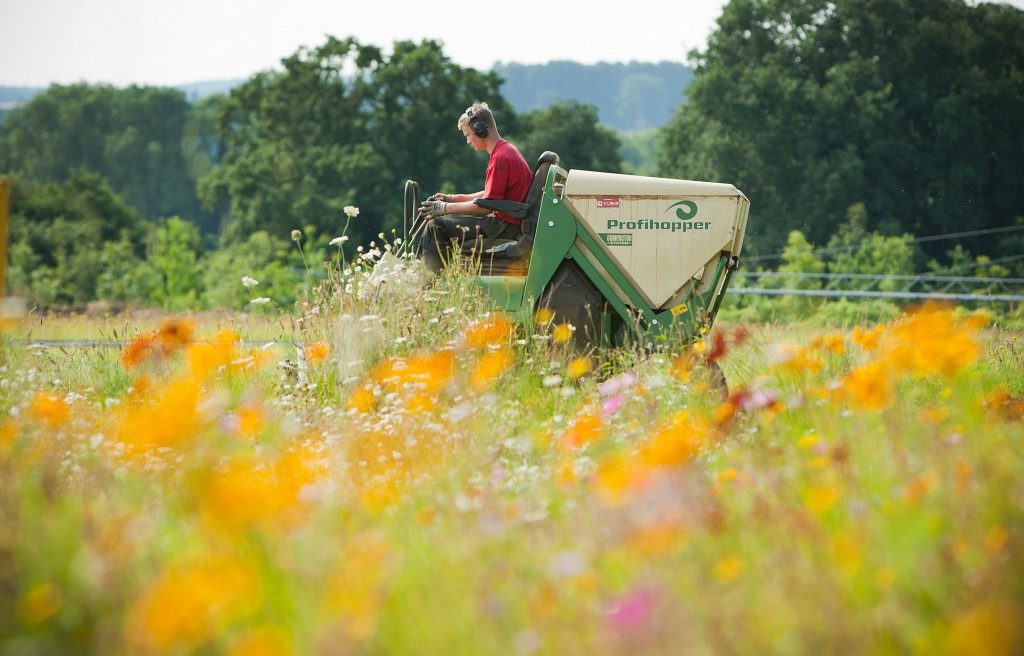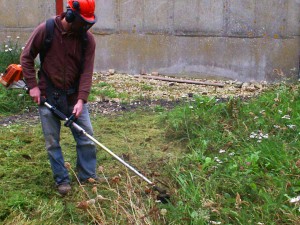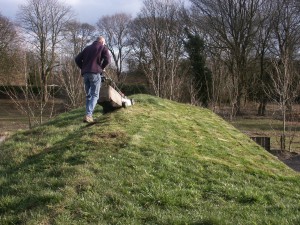Wildflower Turf meadows require minimal maintenance. However, every Autumn your meadow will require a little attention and September and October is the ideal time to carry out the task of cutting if you have not already done so.
No two meadows will grow in exactly the same way or even at the same rate, with the mix of flowers and grasses that flourish varying year-on-year. This year we’ve seen the second warmest September since 1910, with temperatures above the seasonal average and sporadic rainfall meaning that some meadows may have accelerated their life cycle and gone to seed quicker, whilst others may have had an extended flowering season. So how best to cut?

Cutting can be achieved by either using a manual or powered scythe, hedge trimmer or strimmer and raking the clippings off to compost, or by using a flail mower such as a Profihopper and collecting the cuttings as you go. Once you have cut the tall, woody material, a good rotary mower on a high setting can be used to go over the area again to neaten it up and collect the final cuttings. Whichever method you choose, make sure the tools are sharp or use tools that have reciprocating blades to get an efficient clean cut and reduce the need to go over the same areas multiple times. Cutting the plants back to 1 to 2 inches (25mm to 50mm) in length is a vital part of their life-cycle and ensures that re-growth will continue year on year. The most important part of this maintenance cut is to make sure you take all of the clippings away. In order to control grasses in your meadow, nutrient depletion is vital and any rotting material left on the meadow will only enrich the soil.


If you have not already done so, the cutting of your meadow should ideally take place when the wildflowers have set and shed their seed. Not only does this tidy up the area for the onset of winter but it stops the senesced summer growth from covering the growing plant in a layer of rotting plant material. An open sward over the winter ensures healthy, disease free plants which can benefit from what light is available to them during these months.
When you do decide to give your meadow its annual cut, it is always advisable to choose a dry day to cut the meadow back. Dry cuttings are easier and cleaner to handle. You may find that your meadow starts to grow again. This is because some species will be quick to utilise any freshly created space, thus taking advantage of the new opportunity that they have been given. Most notably the species that you will probably see are plantain, campion, wild carrot, yarrow, sorrel, ox-eye, as well as some grasses. This is absolutely fine, as it is the last chance the meadow has to green-up ready for the winter when it will go dormant.
If you have a larger sized meadow, it is preferable to cut in stages to be kinder to the wildlife and allow any mammals or insects to translocate, leaving a neighbouring strip that is left for a month or so longer before cutting.
As Spring approaches, the wildflowers and grasses will be in the perfect position to develop flowers and seed heads quickly to repeat their perennial cycle, thus guaranteeing a wildflower meadow year after year.